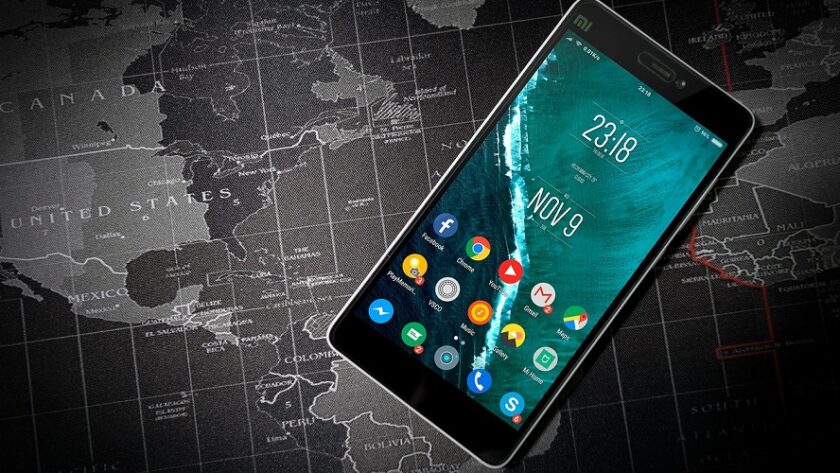How do you know how much memory you need in your smartphone? The question itself seems childish and frivolous, because the answer is so simple and lies on the surface. But behind this simplicity there are pitfalls that almost no one thinks about. The impetus for this story was the result of several events. While on a business trip I was talking to the owners and managers of cellular stores and the conversation brought up the point that the choice of memory capacity is a stumbling block for many buyers and a lot of time is spent on it. For stores this means having to offer at least two versions of the same smartphone, one with basic storage capacity and one with extended storage capacity.
Another conversation was with a friend, she was buying her mom a phone as a gift, asking for advice. Recommended the Galaxy A51 in the basic version, but she decided to buy a 128 GB model so that “there would be enough memory for years to come.” Finally, a conversation with a friend who was choosing between a 128GB or 256GB iPhone 12 Pro Max. The topic comes up periodically, which means it’s a good time to share some thoughts about it.
How much memory is in your smartphone, memory cards
The cost of making a mistake when choosing a particular version of an Android smartphone is not so great, since you can always use memory cards, most devices support them. Even if you miss initially, you can partially correct your mistake. But here you need to understand that not all applications allow you to save all files on the memory card, not always it has a positive effect on the speed, so here too it is worth paying attention. In some Android flagships do not support memory cards, as well as in the iPhone, so the right choice here becomes even more important. However, for Android-smartphones, as a rule, there is enough memory for your eyes, and you will not notice any flaws.
You need the memory in your smartphone not only to store apps, photos, music, and other content, but also to run the system itself. The operating system initially takes up some memory on your device, so if you buy a smartphone with 128 GB of memory, you can’t expect to have all of it free.
Neither Android nor iOS can occupy all the memory of the phone, as this will lead to slowdowns, some functions will not work at all. A universal rule of thumb is that 6-8 GB of free memory is ideal, this will avoid any problems. It is harmful to fill the memory up to the eyeballs, because you will get a lot of problems and definitely will not be happy with your device. Most of those who complain about slow Android tend to do exactly that – shovel out all the memory and don’t realize what they are doing wrong.
In my opinion, in order to figure out how much memory you need, you need to first assess what you are doing on your smartphone, how much memory you have today. Go to the appropriate section and see how much you have occupied. If your device is 1-3 years old, and the amount of free memory is about half, then you are likely a “light” user, mostly making calls, messaging, occasionally taking photos. Using a smartphone as a phone and means of communication, you do not load memory with applications, as a consequence, for you the choice is as simple as possible – the same amount of memory or more due to the fact that even in the basic models the amount of built-in memory is constantly growing. A couple of years ago, the flagships had 64 GB of memory, today it is 128 GB (the iPhone 12 is the only exception).
But let’s look at the average person who is not distinguished by a craving for content consumption, watching movies on the phone, but occasionally takes photos, records videos. Oddly enough, my friend’s mom fits this description perfectly. She calls, chats on messengers, watches something online or on YouTube. The woman is older, but enjoys taking pictures of family gatherings, outings, and also takes videos of significant events. Her memory consumption does not seem linear, it is not filled with something daily. A birthday happens, and some of the memory is eaten away by photos and videos. The process is gradual, not very fast. But here it is important to understand that she is not ready to delete photos and videos of the family, for her it is a value. And there is no other content. As an option, the kids can help upload all the photos and videos to the cloud, but it won’t be free in the future (the same Google Photo will charge for this from June 2021, and this is the first swallow).
It’s good if you’re there when your phone memory is full, but what if not? Remotely explaining how to clean the memory and what can be deleted is always problematic. So it’s worth making a habit of watching what’s going on on a device like this, and taking care not to run out of memory (including perhaps transferring files to or adding a memory card).
In my opinion, in 2021, it’s worth targeting 64GB of memory and keeping in mind the use of a memory card later on for such users, it seems like a rational approach. The memory card you can install virtually any amount (you should put 128 GB or more, the choice is yours, but for older people, focus on the manufacturer and its quality, the speed of the card does not play a role). Let us conventionally call these users our grandmothers, they are people from 60 and older. For them, this amount of memory in most cases will be enough.



